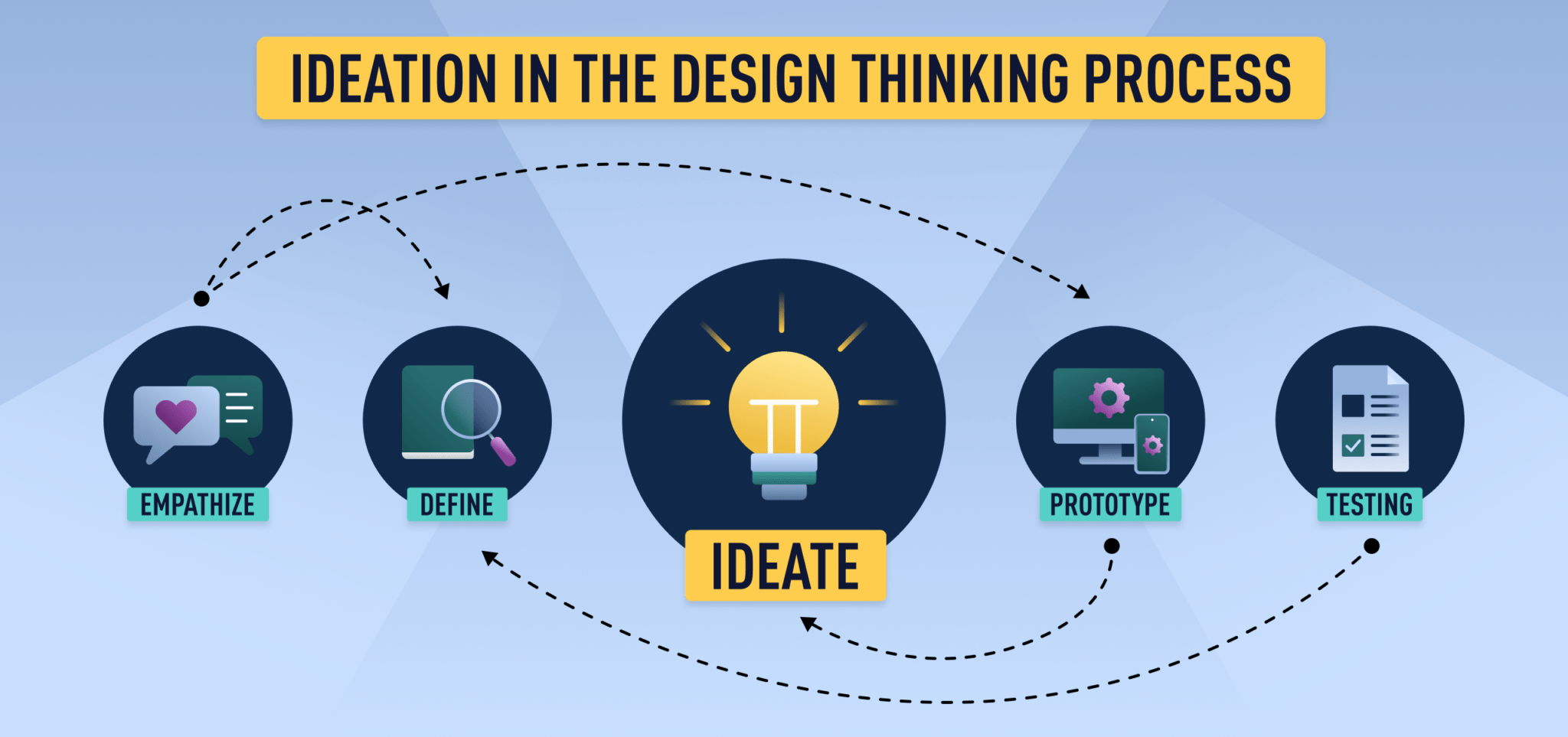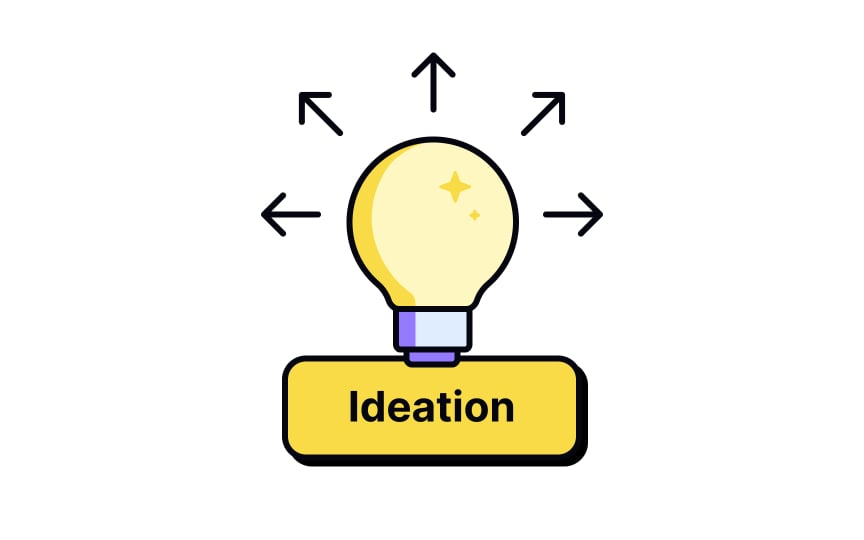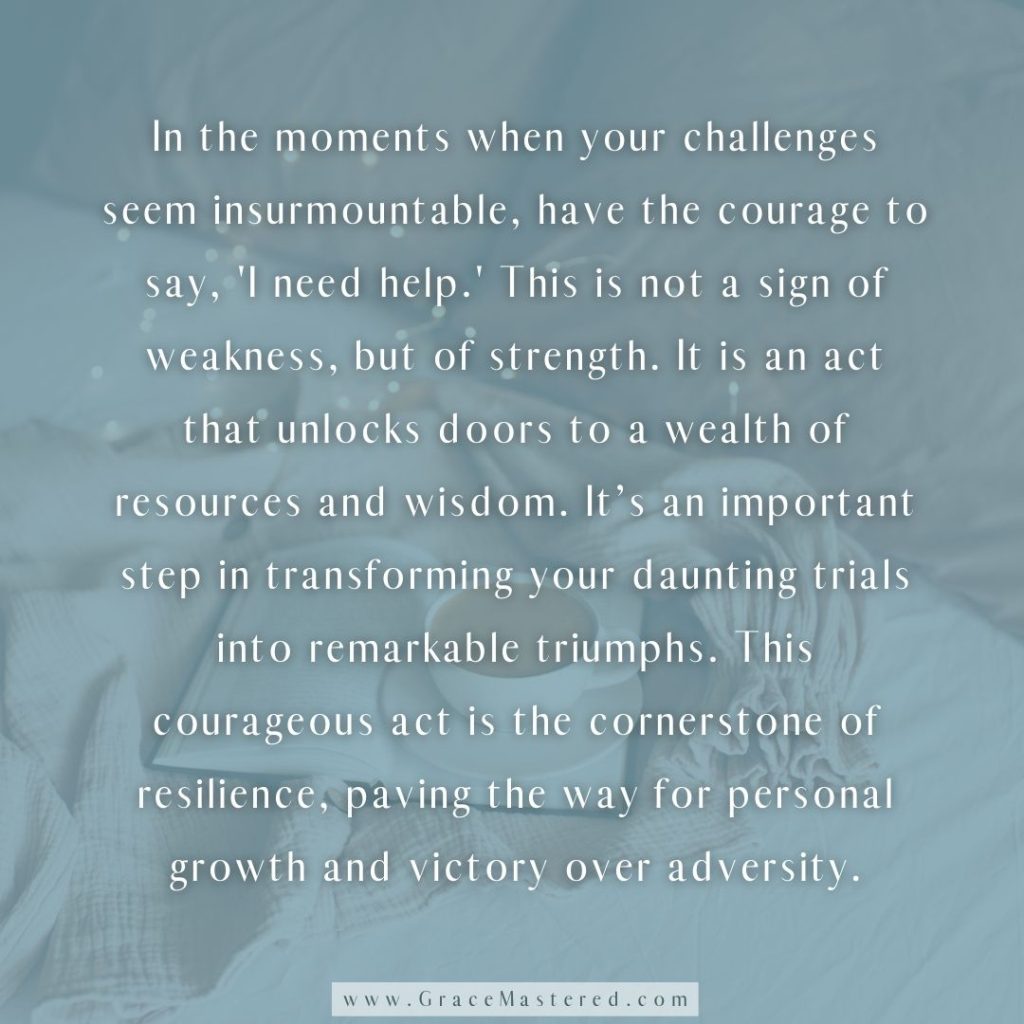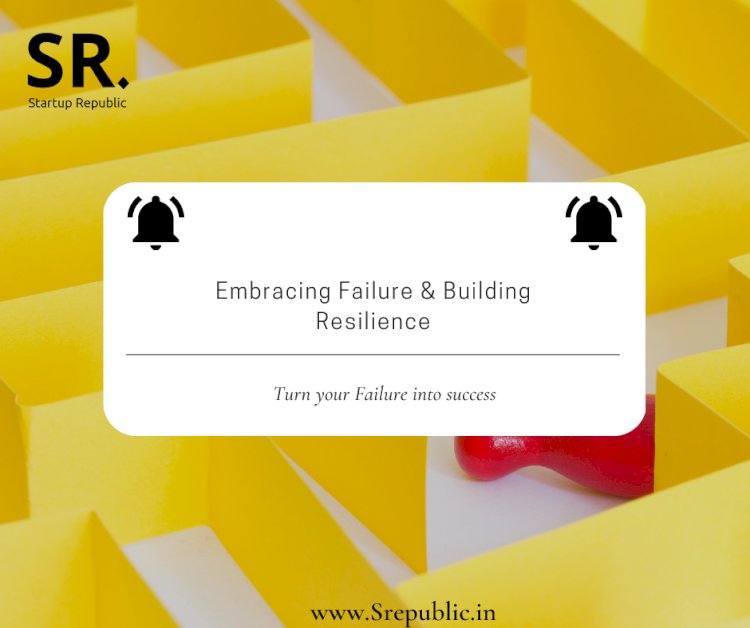
Design Thinking for Startup Ideation: A Practical Guide to Unlocking Innovation
Starting a new venture is exhilarating, but the journey from a vague idea to a viable product or service can be fraught with uncertainty. Many aspiring entrepreneurs jump straight to building, only to discover later that their brilliant solution doesn’t actually solve a real problem for anyone. This is where Design Thinking comes in – a powerful, human-centered approach that can dramatically increase your chances of success by ensuring your startup idea is rooted in genuine user needs.
This practical guide will demystify Design Thinking, showing you how to leverage its stages to generate, refine, and validate innovative startup ideas that truly resonate with your future customers.
What is Design Thinking? More Than Just a Buzzword
At its core, Design Thinking is a problem-solving methodology that puts the end-user at the heart of the process. Instead of guessing what people need, you actively seek to understand their experiences, challenges, and desires. It’s not just for designers; it’s a mindset and a toolkit for anyone looking to innovate, especially perfect for the lean and agile world of startups.
Key Principles of Design Thinking:
- Human-Centered: Everything revolves around understanding and addressing the needs of your target users.
- Empathy-Driven: You aim to truly understand people’s feelings, experiences, and perspectives.
- Iterative: It’s not a linear process. You move back and forth between stages, constantly learning and refining.
- Collaborative: It thrives on diverse perspectives and teamwork.
- Experimental: You embrace prototyping and testing early and often, learning from failures quickly and cheaply.
Why is it Perfect for Startup Ideation?
- Reduces Risk: By focusing on real problems, you avoid building solutions nobody wants.
- Fosters Innovation: It encourages out-of-the-box thinking and exploring multiple solutions.
- Saves Time & Money: Early validation and iteration prevent costly mistakes down the line.
- Builds User-Centricity: Ensures your product/service will genuinely serve its audience.
- Empowers Creativity: Gives you a structured way to unleash your team’s innovative potential.
The 5 Stages of Design Thinking for Startup Ideation
While often presented linearly, remember that Design Thinking is a fluid process. You might loop back, skip forward, or even revisit stages as you learn more.
Stage 1: Empathize – Stepping into Your Users’ Shoes
This is the foundational stage where you set aside your assumptions and truly try to understand the people you’re designing for. For a startup, this means identifying potential target users and diving deep into their world to uncover their pain points, needs, and desires related to the problem space you’re exploring.
Why it’s Crucial for Startups:
Your startup’s success hinges on solving a real problem for a real group of people. Skipping empathy means building in the dark.
How to Empathize for Startup Ideation:
- Conduct User Interviews: Talk directly to potential users. Ask open-ended questions about their experiences, frustrations, and daily routines related to the problem you’re interested in.
- Example Question: "Tell me about a time you tried to [solve a problem related to your area of interest]. What was difficult about it?"
- Observe Users in Their Natural Environment: See how people actually behave, not just what they say. This can reveal unspoken needs or workarounds.
- Example: If you’re thinking about a food delivery service, observe people’s lunch habits at an office or their dinner routines at home.
- Create Empathy Maps: A visual tool to summarize your findings. Map out what users:
- Say: Direct quotes from interviews.
- Think: Their beliefs, values, and motivations (inferred).
- Do: Their actions, behaviors, and habits.
- Feel: Their emotions, fears, and aspirations.
- Immerse Yourself: If possible, experience the problem yourself.
- Example: If you’re designing for commuters, try commuting during rush hour using different methods.
Outcome of Empathize:
A deep, nuanced understanding of your potential users, their world, their challenges, and their unmet needs. You’ll move beyond surface-level ideas to identify true opportunities.
Stage 2: Define – Pinpointing the Core Problem
Once you’ve gathered a wealth of insights from the Empathize stage, the Define stage is about making sense of it all. You synthesize your findings to craft a clear, actionable problem statement from the user’s perspective. This is crucial because it ensures everyone on your team is focused on solving the right problem.
Why it’s Crucial for Startups:
A well-defined problem statement acts as your North Star. It prevents scope creep and ensures your subsequent ideation efforts are targeted and relevant.
How to Define the Problem:
- Affinity Mapping: Write down all your observations, insights, and user quotes on sticky notes. Group similar ideas together to find patterns and themes.
- Identify Key Insights: What are the most significant pain points, unmet needs, or surprising discoveries?
- Craft a "Point-of-View" (POV) Statement: This frames the problem from the user’s perspective.
- Formula:
[User Name/Type] needs a way to [User Need] because [Surprising Insight]. - Example: "A busy young professional needs a way to find healthy, quick dinner options because they lack time for meal prep and are tired of unhealthy takeout."
- Formula:
- Formulate "How Might We" (HMW) Questions: These transform your insights into actionable design challenges. They are broad enough to allow for diverse solutions but narrow enough to provide focus.
- Formula:
How might we [verb] [user need] so that [impact/benefit]? - Example based on POV: "How might we help busy young professionals access healthy dinner options quickly and conveniently so they can maintain a balanced diet without sacrificing their limited free time?"
- Formula:
Outcome of Define:
A clear, concise, and user-centric problem statement (or several HMW questions) that will guide your ideation efforts. You’ll know what problem you’re trying to solve.
Stage 3: Ideate – Brainstorming Solutions (Quantity Over Quality!)
This is the fun part! With a clearly defined problem in hand, the Ideate stage is all about generating as many potential solutions as possible, no matter how wild or impractical they may seem at first. The goal is to think outside the box and defer judgment.
Why it’s Crucial for Startups:
The best solutions often emerge from a wide pool of initial ideas. Limiting yourself too early can stifle true innovation.
How to Ideate Effectively:
- Brainstorming Sessions: Gather your team (or even just yourself) and throw out ideas.
- Rules:
- Defer Judgment: No idea is bad at this stage.
- Encourage Wild Ideas: The crazier, the better – they can spark other, more feasible ones.
- Build on Others’ Ideas: "Yes, and…"
- Go for Quantity: Aim for a large number of ideas within a set time.
- Rules:
- Brainstorming Techniques:
- Mind Mapping: Start with your HMW question in the center and branch out with related ideas.
- SCAMPER Method: Use prompts to generate ideas:
- Substitute: What can be replaced?
- Combine: What can be merged?
- Adapt: What can be adjusted to fit?
- Modify (Magnify/Minify): What can be changed, made bigger, or smaller?
- Put to another use: How can it be used differently?
- Eliminate: What can be removed?
- Reverse (Rearrange): What if we did the opposite?
- Crazy 8s: Fold a paper into 8 sections. For one HMW question, sketch 8 distinct ideas in 8 minutes (1 minute per idea). Forces rapid ideation.
- "Worst Possible Idea" Brainstorm: Sometimes thinking of the worst ideas can spark truly innovative ones by forcing you to break assumptions.
Outcome of Ideate:
A large collection of diverse potential solutions to your defined problem. You’ll have many options to consider and refine.
Stage 4: Prototype – Making Your Ideas Tangible
Now it’s time to bring your best ideas to life in a tangible, low-fidelity way. A prototype is a scaled-down version of your solution, designed to test a specific aspect of your idea quickly and cheaply. It’s not about building a finished product; it’s about creating something that users can interact with to provide feedback.
Why it’s Crucial for Startups:
Prototypes allow you to test your riskiest assumptions early, validate concepts, and gather feedback before investing significant time and money into full development. Fail fast, learn faster!
How to Prototype for Startup Ideation:
- Focus on Low-Fidelity: Don’t spend too much time or money. The goal is to learn, not to perfect.
- Choose the Right Prototype for the Idea:
- Paper Prototypes/Sketches: For mobile apps or websites, draw out screens and user flows on paper.
- Storyboards: Illustrate a user’s journey interacting with your service/product.
- Role-Playing/Acting: For service-based ideas, act out the experience.
- Physical Models: Use cardboard, LEGOs, clay, or simple materials for physical products.
- Mockups/Wireframes: Simple digital layouts using tools like Figma or Balsamiq.
- Landing Page MVP: A simple website describing your offering, with a sign-up form to gauge interest.
- Test a Specific Assumption: What is the one thing you want to learn from this prototype?
- Example: "Do users understand the core value proposition?" or "Is this feature intuitive?"
Outcome of Prototype:
A tangible, testable version of your idea (or a key part of it) that can be put in front of real users.
Stage 5: Test – Gathering Feedback and Iterating
The final stage (for now!) involves putting your prototypes in front of real users to gather feedback. This is where you validate your assumptions, identify what works, what doesn’t, and what needs improvement. The insights gained from testing will often lead you back to earlier stages to refine your problem definition, generate new ideas, or create new prototypes.
Why it’s Crucial for Startups:
Testing provides direct evidence of whether your solution resonates with users. It’s your opportunity to course-correct before launch and build something truly desired.
How to Test Your Prototypes:
- Recruit Target Users: Find people who fit the profile of your ideal customer.
- Conduct User Testing Sessions:
- Set Clear Tasks: Ask users to perform specific actions with your prototype.
- Observe and Listen: Pay attention to their body language, confusion, and direct feedback. Don’t lead them.
- Ask Open-Ended Questions: "What was confusing here?" "What did you expect to happen?" "How would you use this in your daily life?"
- Avoid Defending Your Idea: Your goal is to learn, not to convince.
- A/B Testing (for digital prototypes): Present two different versions of a feature or layout to different user groups to see which performs better.
- Analyze Feedback: Look for patterns, recurring issues, and common positive reactions.
- Document Learnings: Keep track of what you’ve discovered.
Outcome of Test:
Valuable, actionable insights from real users. This feedback will inform your next steps – whether it’s refining the existing idea, pivoting to a new one, or moving closer to development.
Beyond the Stages: The Iterative Mindset
It’s vital to understand that Design Thinking is rarely a clean, linear path. After testing, you might discover that:
- Your prototype needs minor tweaks (go back to Prototype, then Test).
- Your idea isn’t quite right, but parts of it are promising (go back to Ideate, then Prototype, then Test).
- Your initial understanding of the problem was flawed (go all the way back to Empathize and Define, then proceed through the stages again).
This constant looping and refining is the strength of Design Thinking. It allows you to build knowledge incrementally, reduce risk, and evolve your startup idea based on real-world feedback.
Key Benefits of Design Thinking for Your Startup Journey
- User-Centric Innovation: Your product/service will be designed for your users, not just at them.
- Reduced Failure Rate: By validating ideas early, you decrease the likelihood of building something nobody wants.
- Faster Learning Cycles: The iterative nature allows for rapid experimentation and adaptation.
- Stronger Value Proposition: You’ll deeply understand the problem you’re solving and articulate your solution’s unique benefits.
- Empowered Teams: Fosters a culture of empathy, collaboration, and creative problem-solving.
- Competitive Advantage: User-driven solutions often stand out in crowded markets.
Common Pitfalls to Avoid in Design Thinking for Startups
- Skipping the Empathy Stage: The biggest mistake! Assumptions kill startups.
- Falling in Love with Your First Idea: Be open to letting go of ideas that don’t validate.
- Not Talking to Real Users Enough: Desk research is helpful, but direct user interaction is gold.
- Building Too Much, Too Soon: Resist the urge to perfect before you test. Low-fidelity is key.
- Fear of Failure: Embrace prototypes as learning tools. Failure in testing is success in learning.
- Treating it as a Checklist: It’s a mindset and a toolkit, not a rigid process to simply check off.
Ready to Design Your Startup’s Future?
Design Thinking isn’t a magic bullet, but it provides a robust framework for approaching startup ideation with confidence and clarity. By systematically empathizing with users, defining their problems, generating diverse solutions, prototyping, and rigorously testing, you’ll not only uncover truly innovative ideas but also build a foundation for a product or service that genuinely impacts lives.
So, roll up your sleeves, embrace the user, and start designing your way to startup success!



Post Comment